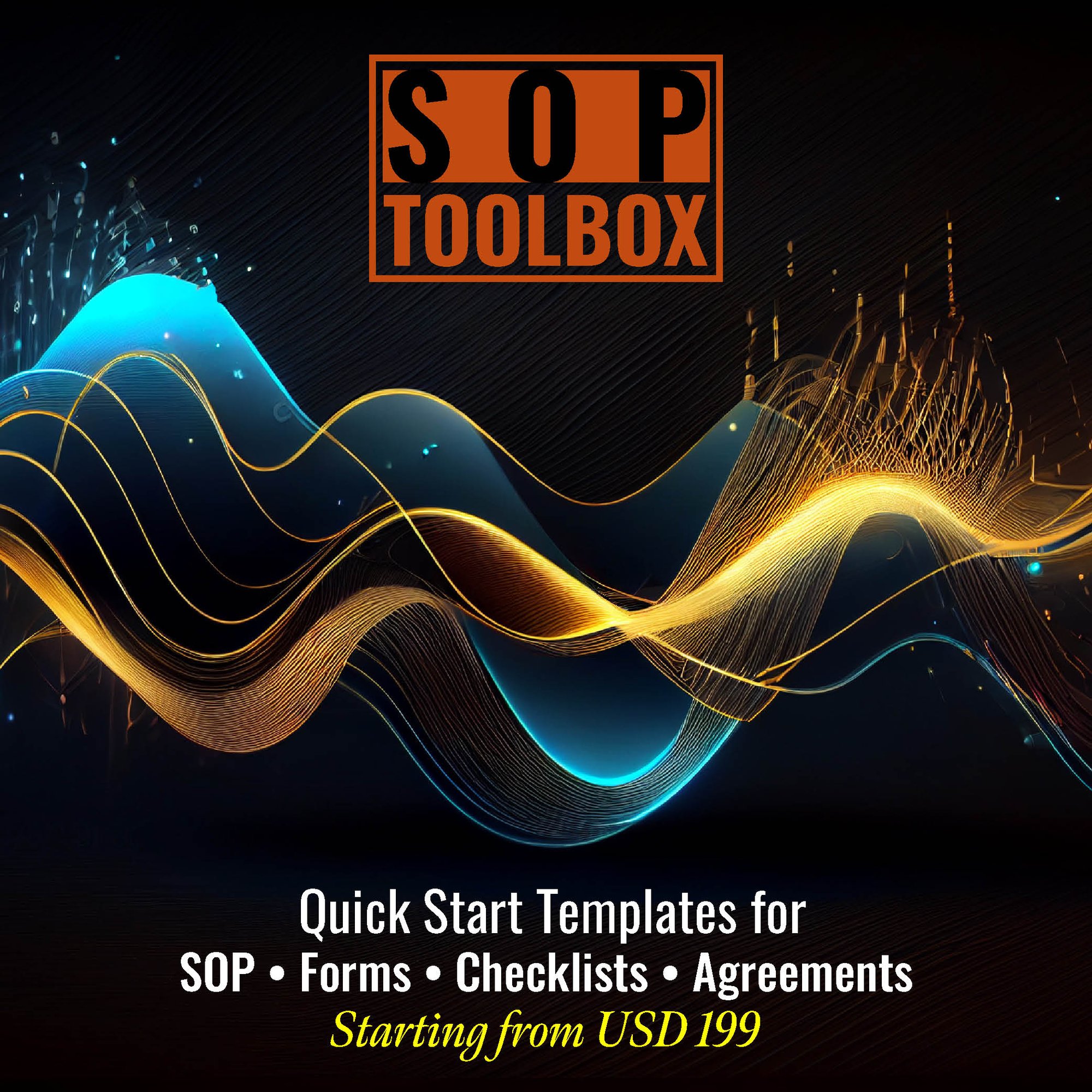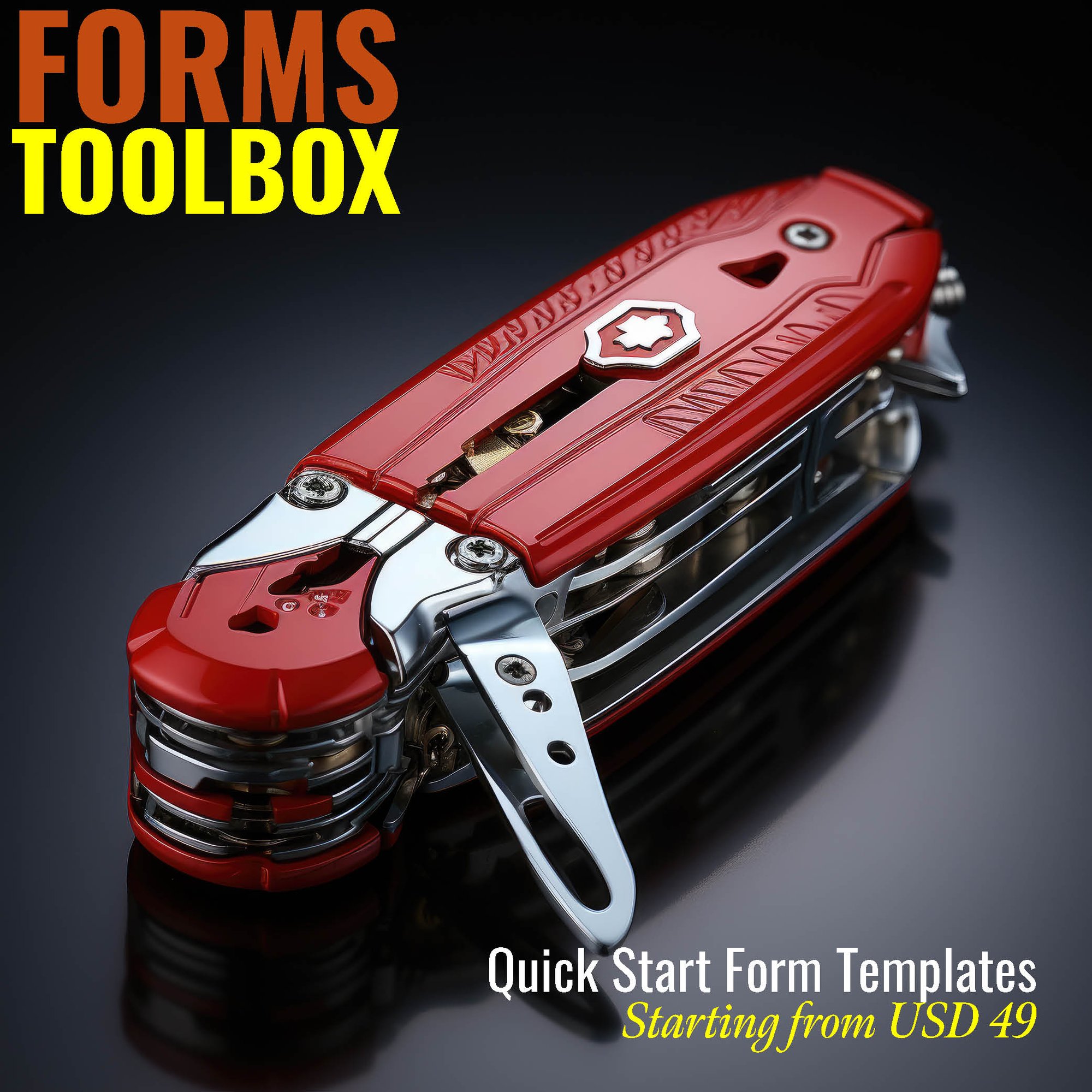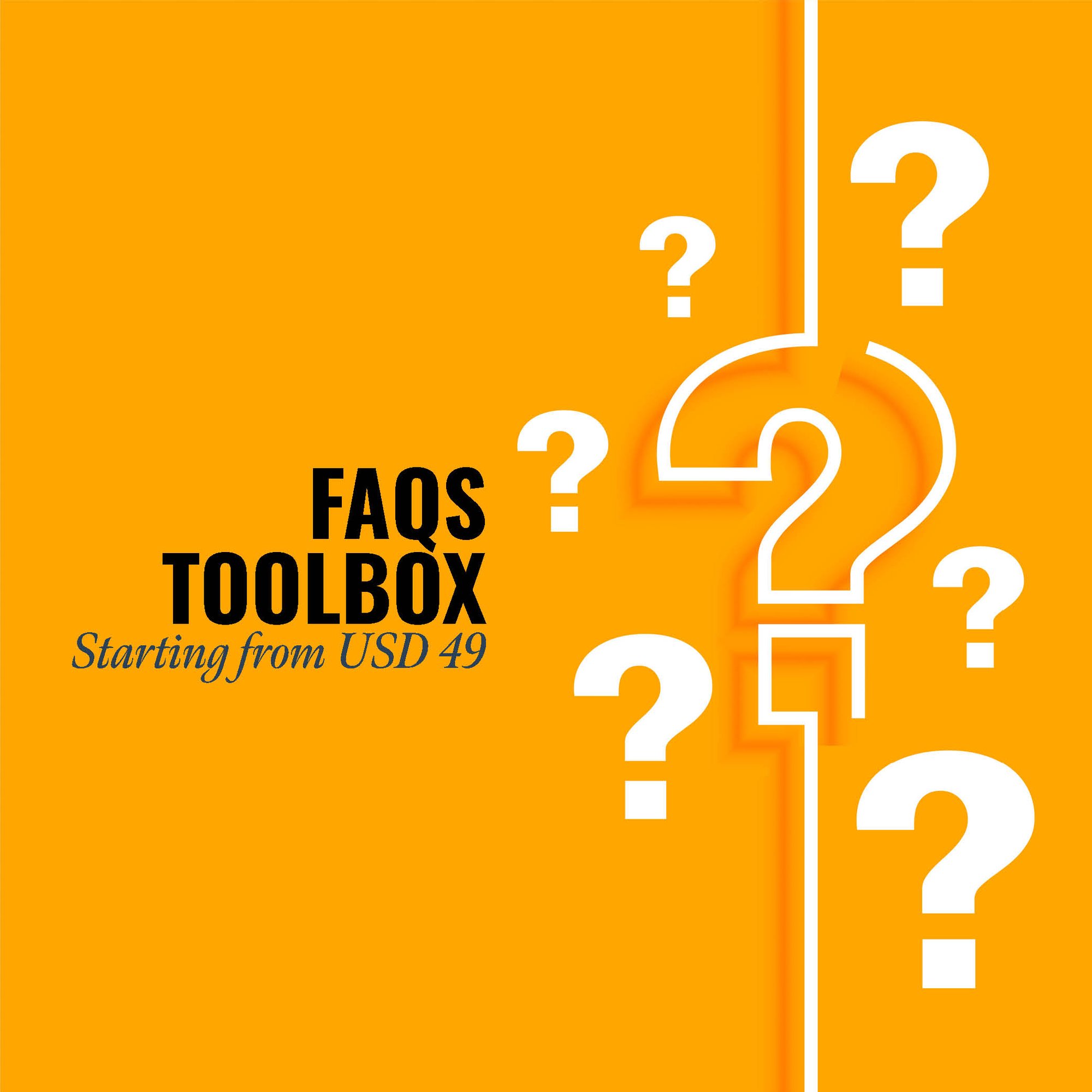The noteworthiness of an "SOP Manual for Apparel Accessories and Other Apparel Manufacturing" is significant within the fashion and textile industry for several compelling reasons:
-
Quality Assurance: This manual defines precise processes for designing, manufacturing, and inspecting apparel accessories and other clothing items. It ensures that every product meets consistent quality standards, enhancing customer satisfaction and brand reputation.
-
Efficiency and Consistency: Standardized operating procedures streamline production workflows, leading to improved operational efficiency. With clearly defined processes, manufacturers can minimize errors, reduce waste, and enhance productivity.
-
Product Innovation: The manual can be a valuable tool for fostering innovation. It encourages the exploration of new manufacturing techniques, materials, and sustainable practices, driving the industry's competitiveness.
-
Compliance and Sustainability: It helps ensure compliance with regulatory standards and sustainability practices, which is increasingly important in today's environmentally conscious market. Manufacturers can minimize their environmental footprint while adhering to legal requirements.
-
Training and Onboarding: The SOP manual facilitates the training and onboarding of new employees, helping them quickly grasp manufacturing processes and become valuable contributors to the production team.
In summary, an SOP Manual for Apparel Accessories and Other Apparel Manufacturing is essential for maintaining product quality, operational efficiency, compliance, innovation, and sustainability in the apparel industry, ultimately contributing to the success of businesses in this competitive market.
CLICK HERE to download the List of SOPs Document in PDF format. Please share this document with your clients, colleagues and senior officers.
Top 50 Standard Operating Procedures (SOPs) for Apparel Accessories and Other Apparel Manufacturing
SOP-1128-001: Standard Operating Procedure for Apparel Manufacturing Overview
SOP-1128-002: Standard Operating Procedure for Apparel Design and Development Process
SOP-1128-003: Standard Operating Procedure for Fabric Sourcing and Selection
SOP-1128-004: Standard Operating Procedure for Pattern Making and Cutting Procedures
SOP-1128-005: Standard Operating Procedure for Sewing and Stitching Standards
SOP-1128-006: Standard Operating Procedure for Quality Control in Cutting and Sewing
SOP-1128-007: Standard Operating Procedure for Apparel Embellishment Techniques
SOP-1128-008: Standard Operating Procedure for Garment Assembly and Finishing
SOP-1128-009: Standard Operating Procedure for Apparel Printing and Embroidery
SOP-1128-010: Standard Operating Procedure for Apparel Dyeing and Coloring Processes
SOP-1128-011: Standard Operating Procedure for Fabric Printing and Finishing
SOP-1128-012: Standard Operating Procedure for Apparel Inspection and Quality Assurance
SOP-1128-013: Standard Operating Procedure for Packaging and Labeling Standards
SOP-1128-014: Standard Operating Procedure for Apparel Inventory Management
SOP-1128-015: Standard Operating Procedure for Equipment Maintenance and Calibration
SOP-1128-016: Standard Operating Procedure for Workplace Safety and Personal Protective Equipment (PPE)
SOP-1128-017: Standard Operating Procedure for Environmental Compliance in Apparel Manufacturing
SOP-1128-018: Standard Operating Procedure for Employee Training and Development
SOP-1128-019: Standard Operating Procedure for Compliance with Ethical Manufacturing Standards
SOP-1128-020: Standard Operating Procedure for Order Processing and Production Planning
SOP-1128-021: Standard Operating Procedure for Apparel Manufacturing Workflow
SOP-1128-022: Standard Operating Procedure for Garment Size Grading Procedures
SOP-1128-023: Standard Operating Procedure for Quality Control in Printing and Embroidery
SOP-1128-024: Standard Operating Procedure for Apparel Production Cost Estimation
SOP-1128-025: Standard Operating Procedure for Apparel Production Schedule Optimization
SOP-1128-026: Standard Operating Procedure for Apparel Prototyping and Sampling
SOP-1128-027: Standard Operating Procedure for Compliance with Industry Regulations
SOP-1128-028: Standard Operating Procedure for Apparel Manufacturing Equipment Setup
SOP-1128-029: Standard Operating Procedure for Sewing Machine Operation and Maintenance
SOP-1128-030: Standard Operating Procedure for Embroidery Machine Operation and Maintenance
SOP-1128-031: Standard Operating Procedure for Printing Machine Operation and Maintenance
SOP-1128-032: Standard Operating Procedure for Dyeing and Coloring Equipment Setup
SOP-1128-033: Standard Operating Procedure for Quality Control for Dyed and Colored Fabrics
SOP-1128-034: Standard Operating Procedure for Apparel Labeling and Branding
SOP-1128-035: Standard Operating Procedure for Apparel Accessories Manufacturing
SOP-1128-036: Standard Operating Procedure for Compliance with International Standards
SOP-1128-037: Standard Operating Procedure for Apparel Manufacturing Material Waste Reduction
SOP-1128-038: Standard Operating Procedure for Apparel Manufacturing Energy Conservation
SOP-1128-039: Standard Operating Procedure for Apparel Manufacturing Process Optimization
SOP-1128-040: Standard Operating Procedure for Apparel Manufacturing Continuous Improvement
SOP-1128-042: Standard Operating Procedure for Fabric Testing and Quality Assurance
SOP-1128-043: Standard Operating Procedure for Apparel Manufacturing Raw Material Storage
SOP-1128-044: Standard Operating Procedure for Apparel Manufacturing Finished Goods Storage
SOP-1128-045: Standard Operating Procedure for Apparel Manufacturing Productivity Metrics
SOP-1128-046: Standard Operating Procedure for Apparel Manufacturing Facility Layout
SOP-1128-047: Standard Operating Procedure for Apparel Manufacturing Cleanroom Procedures
SOP-1128-048: Standard Operating Procedure for Apparel Manufacturing Automation Integration
SOP-1128-049: Standard Operating Procedure for Apparel Manufacturing Ergonomics
SOP-1128-050: Standard Operating Procedure for Continuous Improvement
SOP ToolBox: If you are reading these lines, I am sure you are looking for Standard Operating Procedure guidelines or SOPs itself. In both the cases, searching in internet will not be yielding any great help. Because no company shares their SOP Development Process and certainly don’t share their SOP Documents. The best way to develop an SOP is creating one for yourself. At Fhyzics, we write SOPs day-in and day-out for companies across the globe including some of the Fortune 500 organisations. Our charge ranges from USD 5000 to USD 50000 depending upon the number of processes to be covered. Certainly, this is not affordable to small and mid-size organisations. Hence, we decided to create this SOP ToolBox to disseminate our 8-Step SOP Development Life-Cycle and best practices at an unbelievably low price.
I always say, writing an SOP is somewhere between art and science. So far you may be clueless on where to start and how to progress on an SOP? This will not be the case after you diligently go through this SOP ToolBox. We have summarised all our secrets here to get you started and to deliver a stunning SOP to your management.
The apparel industry traditionally has consisted mostly of production workers who performs the manufacturing process like cutting and sewing functions in an assembly line. This industry remains labour-intensive, despite advances in technology and workplace practices.
1. Standard Operating Procedures (SOP) Manual for Accounts Department
2. Standard Operating Procedures (SOP) Manual for Finance Department
3. Standard Operating Procedures (SOP) Manual for Customer Service
4. Standard Operating Procedures (SOP) Manual for CRM Department
5. Standard Operating Procedures (SOP) Manual for Credit Department
6. Standard Operating Procedures (SOP) Manual for Treasury Department
7. Standard Operating Procedures (SOP) Manual for Human Resources (HR) Department
8. Standard Operating Procedures (SOP) Manual for Training Department
9. Standard Operating Procedures (SOP) Manual for Learning & Development Department
10. Standard Operating Procedures (SOP) Manual for Administration Department
11. Standard Operating Procedures (SOP) Manual for Front Office
12. Standard Operating Procedures (SOP) Manual for House Keeping
13. Standard Operating Procedures (SOP) Manual for Safety Department
14. Standard Operating Procedures (SOP) Manual for Security Department
15. Standard Operating Procedures (SOP) Manual for Facilities Management Department
16. Standard Operating Procedures (SOP) Manual for Vigilance Department
17. Standard Operating Procedures (SOP) Manual for Legal Department
18. Standard Operating Procedures (SOP) Manual for Information Technology (IT) Department
19. Standard Operating Procedures (SOP) Manual for Sales & Marketing Department
20. Standard Operating Procedures (SOP) Manual for Design & Engineering
21. Standard Operating Procedures (SOP) Manual for Procurement Department
22. Standard Operating Procedures (SOP) Manual for Production
23. Standard Operating Procedures (SOP) Manual for SRM Department
24. Standard Operating Procedures (SOP) Manual for Supply Chain Department
25. Standard Operating Procedures (SOP) Manual for Warehouse
26. Standard Operating Procedures (SOP) Manual for New Product Development Department
27. Standard Operating Procedures (SOP) Manual for Research and Development
28. Standard Operating Procedures (SOP) Manual for Quality Department
29. Standard Operating Procedures (SOP) Manual for Calibration Department
30. Standard Operating Procedures (SOP) Manual for Maintenance Department
- Other Footwear Manufacturing
- All Other Leather Good Manufacturing
- Sheer Hosiery Mills
- Other Hosiery and Sock Mills
- Outerwear Knitting Mills
- Underwear and Nightwear Knitting Mills
- Men's and Boys' Cut and Sew Apparel Contractors
- Women's, Girls', and Infants' Cut and Sew Apparel Contractors
- Men's and Boys' Cut and Sew Underwear and Nightwear Manufacturing
- Men's and Boys' Cut and Sew Suit, Coat, and Overcoat Manufacturing
- Men's and Boys' Cut and Sew Shirt (except Work Shirt) Manufacturing
- Men's and Boys' Cut and Sew Trouser, Slack, and Jean Manufacturing
- Men's and Boys' Cut and Sew Work Clothing Manufacturing
- Men's and Boys' Cut and Sew Other Outerwear Manufacturing
- Women's and Girls' Cut and Sew Lingerie, Loungewear, and Nightwear Manufacturing
- Women's and Girls' Cut and Sew Blouse and Shirt Manufacturing
- Women's and Girls' Cut and Sew Dress Manufacturing
- Women's and Girls' Cut and Sew Suit, Coat, Tailored Jacket, and Skirt Manufacturing
- Women's and Girls' Cut and Sew Other Outerwear Manufacturing
- Infants' Cut and Sew Apparel Manufacturing
- Fur and Leather Apparel Manufacturing
- All Other Cut and Sew Apparel Manufacturing
- Hat, Cap, and Millinery Manufacturing
- Glove and Mitten Manufacturing
- Men's and Boys' Neckwear Manufacturing
- Other Apparel Accessories and Other Apparel Manufacturing
- Leather and Hide Tanning and Finishing
- Rubber and Plastics Footwear Manufacturing
- House Slipper Manufacturing
- Men's Footwear (except Athletic) Manufacturing
- Women's Footwear (except Athletic) Manufacturing
- Luggage Manufacturing
- Women's Handbag and Purse Manufacturing
- Personal Leather Good (except Women's Handbag and Purse) Manufacturing
Sampling is a process where factory develop garment samples according to buyer's specified design. This is also known as product development stage. Samples are required at various stages to get approval from buyer on a particular design. As per the development stages samples are named as Proto sample, Fit sample, Size set sample, Sales man sample, production sample, Top of production (TOP) sample and shipment sample.
A business is all about making profit. So correct costing of a product before order finalization is very important. Costing of garment is the cumulative cost of raw materials, direct labors and direct and indirect overheads. After developing sample or directly receiving buyer's sample factory needs to send FOB (freight on board) price of the garment. To decide FOB of a garment factory makes cost sheet including raw material cost, total of direct labour costs of each processes, factory overhead. An FOB is the sum of garment cost, factory margin and taxes.
After receiving the order factory plans for raw material requirement for the order. Raw materials like fabrics, sewing threads, packing materials, hang tags and other accessories. Factory plans timelines like when to start cutting, when to submit pre-production sample, when to finish sewing and finishing, final inspection date and shipment date. In production planning stage job responsibility for different processes is defined.
In this stage fabrics are layered on a table layer by layer up to a certain height. Then by means of a cutting machine fabric are cut into garment shapes or pattern and separated from the layer. Fabric layering is possible both manual spreading and automated spreading. Cut parts are then numbered and bundled and send to sewing room. For details about cutting process see cutting room overview. The quality of end product (garment) is very much depends on the good cutting quality. Secondly, fabric the main raw material of the garment represents about 70% of total garment cost. That is why cutting is an important process like others where control the fabric saving and garment quality.
Garment panels are stitched together in sewing room by means of sewing machines. In sewing 2D fabric patterns are converted in 3D forms. An operator run the machine and using sewing threads garment parts are joined together. Various types of sewing machine are available for sewing. Machines are selected according to the seam and stitch requirement. In industry traditionally sewing machines are laid in a raw. Cut parts are feed at the start of the line, passed through the line and at the end of the line a complete garment come out. Each machine is run by individual operators and an operator sews only one or two operations of the garment. A line consists of sewing operators, helper to feed them with cut parts, thread and other trims, quality checker and one fully or partially devoted supervisor.
After stitching, all hanging thread are cut by means of hand trimmer. Auto thread trimming machines are also available to perform this task. All loose threads inside a garment are removed as well. Garments without any loose thread and long tail are basic quality requirement.
This process is performed when buyer want washing or special finishes to the garments. For light colour garment washing is carried out to remove dirt.
Generally, this process includes checking of garment, measurement checking, ironing, and spotting. After sewing of the garments, all pieces are checked by quality checker to ensure that garments are being made as per buyer quality standard. Checking normally is done for visuals appearance and measurements. Spotting is required to remove stain in the pieces. Various chemicals (solvents) are used to remove various kinds of oil stain, marks and hard stain. Each garment then ironed to remove creases by means of press.
Each pressed garment is then folded with tissue or card board. Folding varies product to product and also buyer to buyer. Hang tags, special tag and prices stickers are attached with plastic Kimble or threads. Folded and tagged garment are then packed into poly bag. During packing garments are randomly checked by internal quality controllers to ensure that only quality goods are being packed.
In current fashion trend very few garments are made without value added processes, like printing, garment dyeing, special washing, embroidery, adda work (hand embroidery with lot of bead work)
Once garments are packed (also known as shipment), before dispatching quality inspection of the garments is carried by buyer quality assurance (QA) department. Many times, a third-party quality auditor is hired for this final inspection job. If the packed goods meet the buyer’s quality standards, shipment is accepted by buyer. Factory then dispatches goods to the buyer.
- Fabrics inspection machine
- Plotter printing machine
- Cutting machine
- Fusing machine
- Embroidery machine
- Sewing machine
- Thread Trimmer machine
- Thread sucking machine
- Iron machine
- Pull test machine
- Metal detector machine
- Barcode scanning machine
- Heat seal joining the machine
- Case label printing machine
- Moisture checking machine
- Digital Hygrometer
- Air compressor machine
- Boiler machine
- Generator
- ISO Certification for Textile and Apparel Industries| ISO Standard
- Textile Standards | ASTM International
- Nike| Beaverton, Oregon, United States| https://www.nike.com/
- Lululemon Athletica| Vancouver, Canada| https://shop.lululemon.com/
- L Brands| Columbus, Ohio, United States| http://www.lb.com/
- Clothing and Textiles Research Journal
- Apparel Magazine: Technology & Business Insight -From Concept to Consumer
- The Business of Fashion: BOF
- California Apparel News
Research By : Udhay Sankar
Keywords: sop, manual, policy, sop meaning, sop full form, standard operating procedure, full sop, user manual, sop is, user guide, instruction manual, owners manual, sample sop, operators manual, sop example,standard operating procedure examples, abbreviation sop, standard operating procedure sample, milk sop, sop document, sop process,m manual, operating procedures, operating process, sop meaning in hindi, standard procedure, sop standard operating procedure, sop top, sop writing, standard operating procedures manual, sop meaning in english, sample sop for mba, standard operating procedures examples in office, product manual, sample sop for ms, maintenance manual, sop security, sop in research, sop in business, whats sop, standard of operation, sop set, sop procedure, sop marketing,sop training, sop hotel, sop, sop meaning business, sop form, sba sop,sop software, help manual, sop it, army sop, company sop, sop sap, o m manual, standard operating procedure examples for small business, shop manual, sop manual, sop meaning in business, purpose of standard operating procedures, sop full meaning, standard operating procedure meaning, sop military, sop standard, sop meaning medical, hr sop, sop production, purpose of sop, sop management, warehouse sop, sales sop, sop pharma, sop manufacturing, sop creation, sop laboratory, ms sop, sop full form in hindi, sop front office, sop customer service, sop online, gmp sop, sop purchasing, sop pharmacy, sop safety, sop for project management,sample sop for australian student visa, sop meaning in tamil, sop system, best sop, sop up, sop in english, sop for mechanical engineering, sop for university,sop in malay, sop lab, sop for business analytics, sop model, sop in pharmacy, developing sops, standard operating procedure examples manufacturing, sop full form in retail,sop full form in medical, sop engineering, sop application, writing standard operating procedures, procurement sop, sop maintenance,standard operating procedure nhs, sop clinical trial, sop operations,sop in construction, operating procedures manual, standard operating procedure ppt, standard procedure meaning, sop ppt, a sop, sop document meaning, sop def, sop full form in safety, sop quality control, sop for college, sop quality, sop service, types of sop, sop for engineering management, sop document sample, benefit of sop, preparing sop, standard operating procedure in hindi, sop for visa, sop compliance, sop protocol, sop aviation, sop meaning in chat, standard operating process, sop meaning military, sop for business management, standard operating procedure software, sop list, sop medical, sop logistics, sop project, sop for it department, sop call center, standard work procedures, sba sop 50 10, sop meaning in logistics, standard operating procedure laboratory, test sop, sop sample for ms, drafting sop, sops meaning in tamil, sops meaning in telugu, sop automotive, standard operating system, sop cafe, sop slideshare, sop ap, sop bank, sop in retail, creating standard operating procedures, sop admin, document control sop, pharmaceutical sop,sop in pharmaceutical industry, statement of purpose harvard, sop examples for ms, quality assurance sop, sop in clinical research, nursing sop, sop for transportation, sop policies, sops are specific to a process, sop in hindi, standard operating procedure for warehouse picking, master sop, list of sop for pharma, pharmaceutical sop examples, types of standard operating procedures, retail sop, sample sop for ms in mechanical engineering, standard operating protocol,sop supply chain, system operating procedure, sop rules, example of sop in research, sop in food industry, sop for international business management, sop for hospitality management, sop for hr department, army sop example, sop standard operating, office sop, hr standard operating procedures, preventive maintenance sop, sop for purchase department, human resources sop, fire department sops, information technology sop, operating procedure example, administration sop,sop for retail store, indian sop, construction management sop, sop hotel front office, example sop document, standard and procedures,working sop, sop for maintenance department, sop hrd department,sop full form in hotel industry, sop full, sop for human resource management, laboratory sop examples, standard operating procedure for quality control, sop for ms in mechanical engineering, sop meaning army, security standard operating procedures, sop machine, sample sop for internship, sop for hotel management, sample sop for masters, qa sop, developing standard operating procedures, standard operating procedure document, product recall sop, marketing statement of purpose, it standard operating procedures, equipment sop, sop purpose example, sop shipping, sop for sales and marketing,converting pos to sop, workshop sop, standard operating procedure manufacturing, digital marketing standard operating procedures, following standard operating procedures, sop ki full form, sop for nursing procedures, an sop, purchase sop for manufacturing company, sop a, statement of purpose for mba marketing, full meaning of sop, sop for research internship, research sop sample,vendor qualification sop, sop purchasing and receiving, sop meaning in visa, sop for admission, standard operating procedure medical office, sop in industry, sop sales marketing, navy sop, project management standard operating procedures, sop it support, standard operating manual, security operating procedures, statement of purpose for international business, procurement standard operating procedures, communication sop, sop full form in pharma, minimum sop, sop health and safety, product sop, sop for marketing department, sop in medical terms, sales standard operating procedure, sop purchase order, department sop, customer service standard operating procedures, clinical sop, marketing standard operating procedure, sop standard operating procedure example, construction standard operating procedures, standard of operations procedures manual sample, sop for facility management, sop full form in education, standard operating procedure in food industry, visa sop,sop for business administration, company sop meaning, sop work, sop operating procedure, sop for summer internship in engineering sample, general administration sop, sop for administrative duties.
Our SOP Templates’ clients are from the following States and Countries:
Alabama, Alaska, Arizona, Arkansas, California, Colorado, Connecticut, Delaware, Florida, Georgia, Hawaii, Idaho, Illinois, Indiana, Iowa, Kansas, Kentucky, Louisiana, Maine, Maryland, Massachusetts, Michigan, Minnesota, Mississippi, Missouri, Montana, Nebraska, Nevada, New Hampshire, New Jersey, New Mexico, New York, North Carolina, North Dakota, Ohio, Oklahoma, Oregon, Pennsylvania, Rhode Island, South Carolina, South Dakota, Tennessee, Texas, Utah, Vermont, Virginia, Washington, West Virginia, Wisconsin, Wyoming.
Afghanistan, Albania, Algeria, Andorra, Angola, Antigua and Barbuda, Argentina, Armenia, Australia, Austria, Azerbaijan, Bahamas, Bahrain, Bangladesh, Barbados, Belarus, Belgium, Belize, Benin, Bhutan, Bolivia, Bosnia and Herzegovina, Botswana, Brazil, Brunei Darussalam, Bulgaria, Burkina Faso, Burundi, Cabo Verde, Cambodia, Cameroon, Canada, Central African Republic, Chad, Chile, China, Colombia, Comoros, Congo (Republic of the), Costa Rica, Croatia, Cuba, Cyprus, Czech Republic (Czechia), Democratic People’s Republic of Korea (North Korea), Democratic Republic of the Congo, Denmark, Djibouti, Dominica, Dominican Republic, Ecuador, Egypt, El Salvador, Equatorial Guinea, Eritrea, Estonia, Eswatini, Ethiopia, Fiji, Finland, France, Gabon, Gambia, Georgia, Germany, Ghana, Greece, Grenada, Guatemala, Guinea, Guinea-Bissau, Guyana, Haiti, Honduras, Hungary, Iceland, India, Indonesia, Iran, Iraq, Ireland, Israel, Italy, Jamaica, Japan, Jordan, Kazakhstan,Kenya, Kiribati, Kuwait, Kyrgyzstan, Lao People’s Democratic Republic (Laos), Latvia, Lebanon, Lesotho, Liberia, Libya, Liechtenstein, Lithuania, Luxembourg, Madagascar, Malawi, Malaysia, Maldives, Mali, Malta, Marshall Islands, Mauritania, Mauritius, Mexico, Micronesia (Federated States of), Moldova, Monaco, Mongolia, Montenegro, Morocco, Mozambique, Myanmar (Burma), Namibia, Nauru, Nepal, Netherlands, New Zealand, Nicaragua, Niger, Nigeria, North Macedonia (formerly Macedonia), Norway, Oman, Pakistan, Palau, Panama, Papua New Guinea, Paraguay, Peru, Philippines, Poland, Portugal, Qatar, Republic of Korea (South Korea), Republic of the Congo, Romania, Russian Federation (Russia), Rwanda, Saint Kitts and Nevis, Saint Lucia, Saint Vincent and the Grenadines, Samoa, San Marino, Sao Tome and Principe, Saudi Arabia, Senegal, Serbia, Seychelles, Sierra Leone, Singapore, Slovakia, Slovenia, Solomon Islands, Somalia, South Africa, South Sudan, Spain, Sri Lanka, Sudan, Suriname, Sweden, Switzerland, Syrian Arab Republic (Syria), Tajikistan, Thailand, Timor-Leste, Togo, Tonga, Trinidad and Tobago, Tunisia, Turkey, Turkmenistan, Tuvalu, Uganda, Ukraine, United Arab Emirates, United Kingdom of Great Britain and Northern Ireland, United Republic of Tanzania, United States of America, Uruguay, Uzbekistan, Vanuatu, Venezuela, Viet Nam, Yemen, Zambia, Zimbabwe.
Fhyzics supports organisations in developing the following documentations:
Standard Operating Procedures (SOPs), Work Instructions, Policies and Procedures, Process Flow Diagrams, Job Descriptions, Training Manuals, Employee Handbooks, Compliance Guidelines, Quality Assurance Manuals, Health and Safety Procedures, Risk Management Plans, Business Continuity Plans, Internal Audit Procedures, Incident Reporting Forms, Performance Management Guidelines, Change Management Procedures, Vendor Management Guidelines, Customer Service Protocols, IT Security Policies, IT Support Documentation, Disaster Recovery Plans, Operational Checklists, Data Management Policies, Confidentiality Agreements, Non-Disclosure Agreements, Employee Onboarding Procedures, Employee Exit Procedures, Performance Appraisal Forms, Employee Code of Conduct, Conflict Resolution Procedures, Product Development SOPs, Supply Chain Management Guidelines, Procurement Guidelines, Inventory Management SOPs, Shipping and Receiving Procedures, Production Scheduling SOPs, Maintenance Procedures, Equipment Calibration Documents, Environmental Compliance Documentation, Sustainability Policies, Customer Feedback Forms, Marketing Strategies, Advertising Guidelines, Brand Management Guidelines, Product Packaging SOPs, Laboratory Testing Procedures, Regulatory Compliance Documentation, Tax and Accounting Procedures, Contract Management Procedures, Legal Compliance Guidelines, Financial Reporting Procedures, Budgeting Procedures, Internal Control Procedures, Fraud Prevention Policies, Asset Management Guidelines, Purchase Order Procedures, Sales and Distribution Guidelines, Client Contracts, Customer Return Policies, Internal Communication Protocols, Vendor Evaluation Forms, Product Safety Standards, Workplace Health and Safety Standards, Public Relations Procedures, Social Media Management Guidelines, Crisis Management Plans, Employee Grievance Procedures, Privacy and Data Protection Policies, Digital Transformation Guidelines, Innovation Management Procedures, Continuous Improvement Guidelines, Strategic Planning Documents, Corporate Social Responsibility (CSR) Guidelines, Audit Trails and Records, Employee Training and Development Records, Succession Planning Documents, Talent Acquisition Procedures, Team Collaboration Protocols, Employee Benefit Plans, Workplace Diversity Guidelines, Time and Attendance Tracking, Payroll Procedures, Employee Leave Policies, Conflict of Interest Policy, Emergency Response Procedures, Environmental Impact Assessment Procedures, Transportation and Logistics Procedures, Inventory Control Forms, Warehouse Management Guidelines, Product Lifecycle Management SOPs, Customer Satisfaction Surveys, Third-Party Risk Assessment Guidelines, Technology Adoption Policies, Software Licensing Guidelines, Security Incident Response Procedures, Supply Chain Risk Management Policies, Product Recall Procedures, Food Safety Guidelines, Employee Wellness Programs, Workplace Ergonomics Guidelines.






.jpg?width=648&height=339&name=Standard%20Operating%20Procedure%20-%20SOP%20ToolBox%20(1).jpg)











